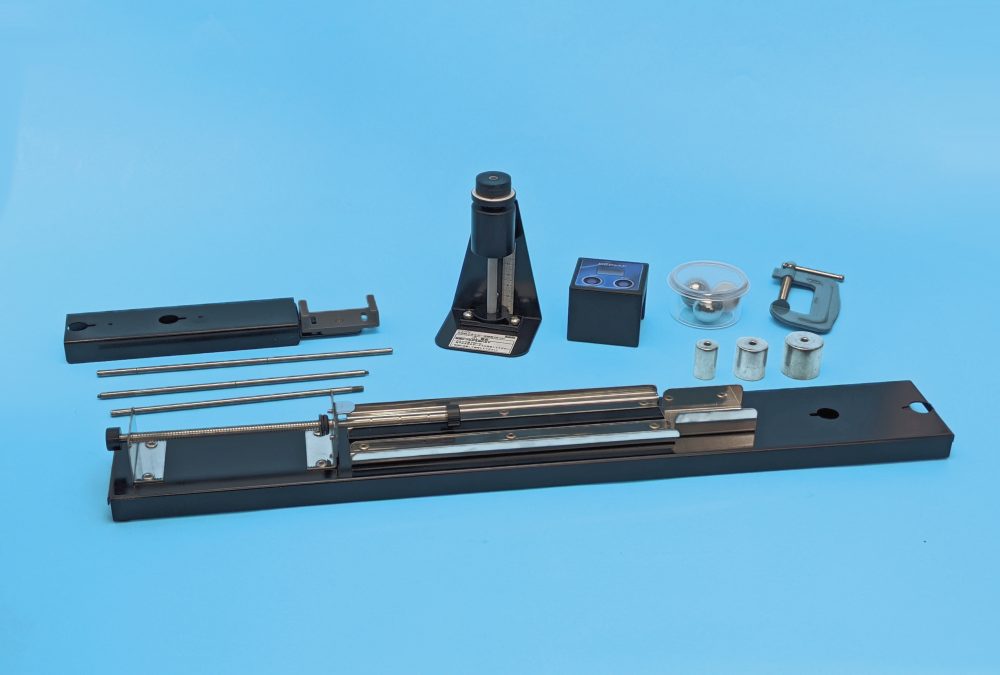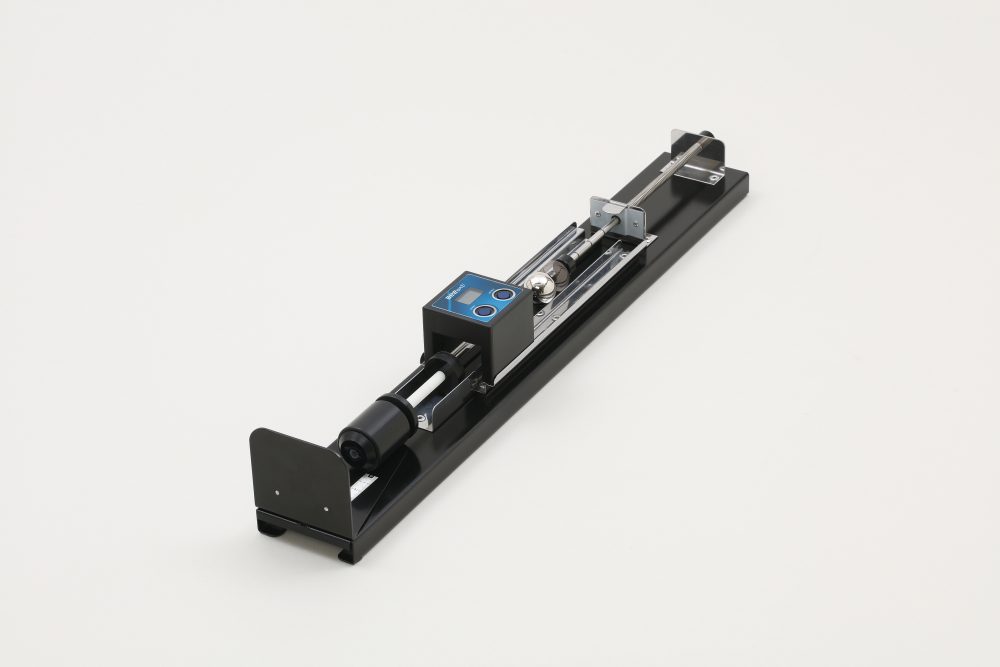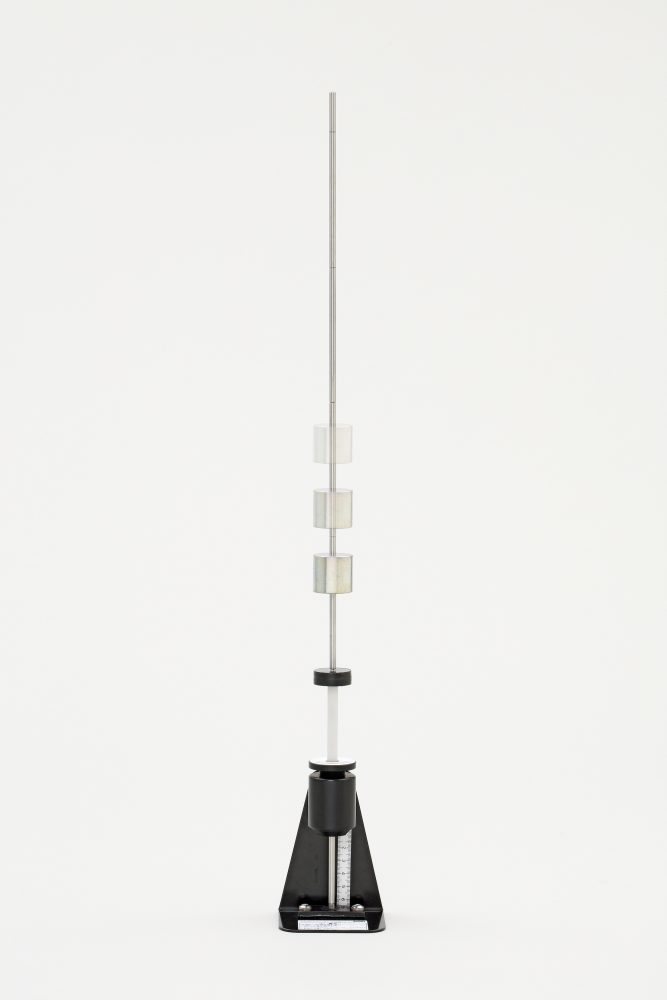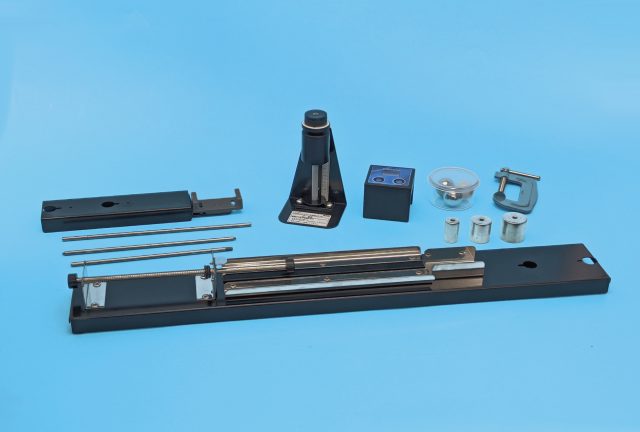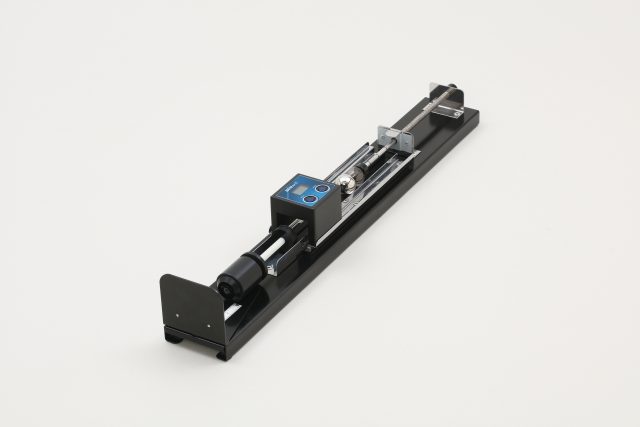Global Science Education
Work & Energy
Vertical & Horizontal Collision Apps
C15-2353-W0
【Product Description】
Mechanical energy experiment set designed to quantify the potential energy of vertically falling object and kinetic energy of horizontally launched object by measuring how deep the center core bar of the pile-driver-like cushion mechanism is compressed after collision with the object in millimeters using the built-in ruler.
【Overall Advantages to Users】
Mechanical energy is a combination of kinetic energy and potential energy. This is why experiments of mechanical energy have commonly been completed by verifying each of kinetic energy and potential energy using two different apparatuses. To ease this complexity, this product was developed as an all-in-one set by consolidating everything needed for the experiments of kinetic energy and potential energy.
【Keywords】
- Mechanical Energy
- Kinetic Energy
- Potential Energy
- Vertical collision
- Horizontal collision
Benefit
Specifications
Related Products
MOVIE
Download
【To teachers】
- The pile-driver-like cushion mechanism is designed to be used as a core part of both setups for quantifying the results of kinetic energy and potential energy experiments.
- Whole apparatus is designed to quantify and verify the mechanical energy of a fallen or launched object that compresses the pile-driver-like cushion mechanism by using the measured values of mass, velocity and impact of collision against the pile-driver-like cushion mechanism.
- Experiments of kinetic energy use the setting of the horizontal launcher to verify the relationship between below parameters (1, 2 and 3) of a launched object that should be represented by the formula of K=1/2 mv2 (where K is kinetic energy, m is mass, v is velocity).
1) Mass.
2) Velocity (measured with the BeeSpi V, a speed measurement light gate, S77-1321).
3) Collision impact against the pile-driver represented by distance. - Experiments of potential energy use the setting of free-fall motion to verify the relationship between below parameters (1, 2 and 3) of a fallen object that should be represented by the formula of F=mgh (where F is force, m is mass, g is gravitational constant, h is height).
1) Height of dropping position
2) Mass
3) Collision impact against the pile-driver represented by distance. - Based on this premise, it is possible to verify that all of the potential energy will change to kinetic energy if we measure the velocity of a fallen object in the event of colliding against the pile-driver and calculate K=1/2 mv2.
- Core component (Pile-driver)
- Repulsion of the center core bar of the pile-driver-like mechanism: Adjustable
- Built-in ruler to measure compression depth of the center core bar:
- Scale with 1mm divisions.
- Size: 80 x 70 x 135mm
- Setting of free-fall motion for potential energy experiments:
- Weight: 3 cylindrical steel weights with different mass (50g, 100g, 150g)
- Steel stem: Three-piece separatable rod with notched scale per 100mm
- Setting of horizontal launcher for kinetic energy experiments:
- Weight: 3 spherical steel balls with 25mm dia. with different mass and each made of different material (Steel ball: 67g, Aluminum ball: 22g, Plastic ball: 9g)
- Launcher: 3 levels of launch speed
- Guide rail: Steel, Size – 590 x 80 x 55mm
- Accessories: C-clamp 1pc, BeeSpi V (S77-1321) 1pc

